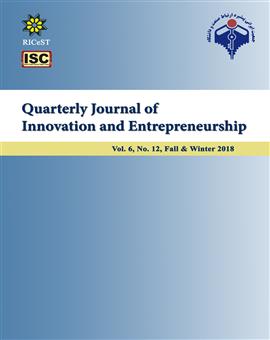-
-
List of Articles
-
Open Access Article
1 - Effects of Network Structure, Knowledge Stock and Absorptive Capacity on Innovative Performance of Knowledge- Based Companies
Morteza Akbari saheb imani roya mahmoudi hoda abedi hadi toloasl -
Open Access Article
2 - Sustainability factors and capacities of university-industry relations In higher education system
rouhollah bagheri mirmohammad seyyed abbas zadeh Mohammad hasani -
Open Access Article
3 - Investigate the Status of Education Based on Mooc in Iran's Higher Education; Challenges and Solutions
hassanreza zeinabadi mosavi tayebeh -
Open Access Article
4 - Exploratory and confirmatory factor analysis of intra-university factors for Universitie’s promotion at National and International Rankings
Mohammad khanazizi aliakbar aminbidokhti abdolrahim nave ebrahim maghsod farasatkhah -
Open Access Article
5 - The Effect of Strategic Innovation on Customer’s Willingness to Buying: The Moderator role of Innovation Capabilities
esfandyar mohamadi vahid sharafi Saeid Vaisi -
Open Access Article
6 - Investigating the role of vocational trainings in creating an entrepreneurial attitude in students
sadegh maleki hoora soudi nayer seyyednazari
-
The rights to this website are owned by the Raimag Press Management System.
Copyright © 2017-2026







